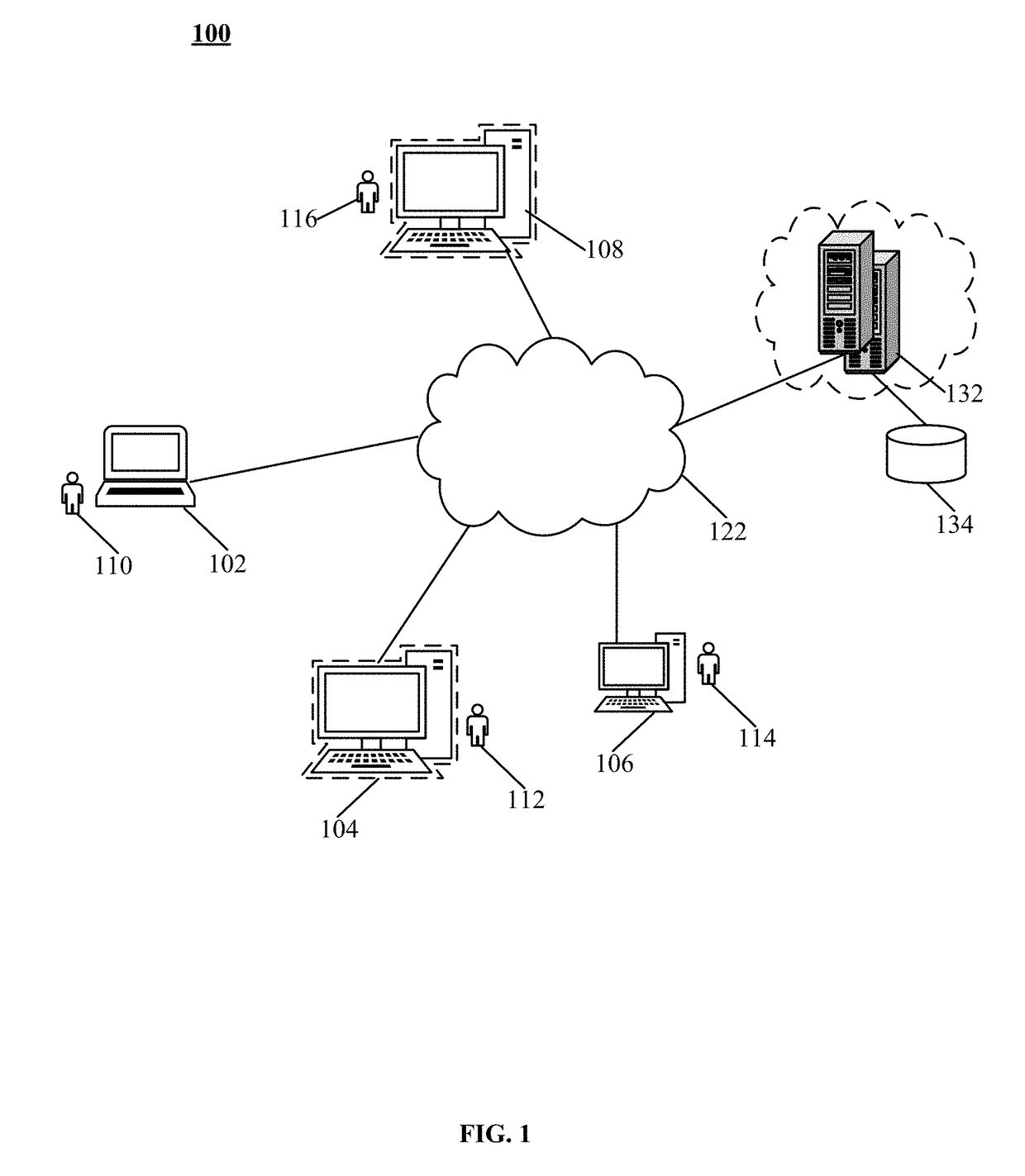Consensus system for manipulation resistant digital record keeping
a technology of digital record keeping and consensus system, which is applied in the field of system and method for maintaining a manipulation resistant digital ledger, can solve the problems of cumbersome and expensive system of checks, balances, audits, and record keeping systems that fail to sufficiently protect against manipulation, and achieve low overhead of operation and high trus
- Summary
- Abstract
- Description
- Claims
- Application Information
AI Technical Summary
Benefits of technology
Problems solved by technology
Method used
Image
Examples
Embodiment Construction
[0048]Turning to the Figures and to FIG. 1 in particular, a networked system for conducting peer-to-peer transactions with consensus is shown and generally indicated at 100. The system 100 tracks digital records with consensus. The system 100 includes a plurality of nodes, such as the computers 102, 104, 106 and 108. Only four nodes 102-108 are shown in the illustrative FIG. 1. A person of ordinary skill in the art will appreciate that more nodes can be included for commercial implementation of the system 100. The computers 102-108 each include a processing unit (such as a central processor), some amount of memory accessed by the processing unit, and a network interface operatively coupled to the processing unit. In addition, the nodes 102-108 each run a special consensus system software application program on their respective processing units. Each node is used and operated by a user, such as the users 110, 112, 114 and 116. The users 110-116 conduct transactions between themselves...
PUM
 Login to View More
Login to View More Abstract
Description
Claims
Application Information
 Login to View More
Login to View More - R&D
- Intellectual Property
- Life Sciences
- Materials
- Tech Scout
- Unparalleled Data Quality
- Higher Quality Content
- 60% Fewer Hallucinations
Browse by: Latest US Patents, China's latest patents, Technical Efficacy Thesaurus, Application Domain, Technology Topic, Popular Technical Reports.
© 2025 PatSnap. All rights reserved.Legal|Privacy policy|Modern Slavery Act Transparency Statement|Sitemap|About US| Contact US: help@patsnap.com



